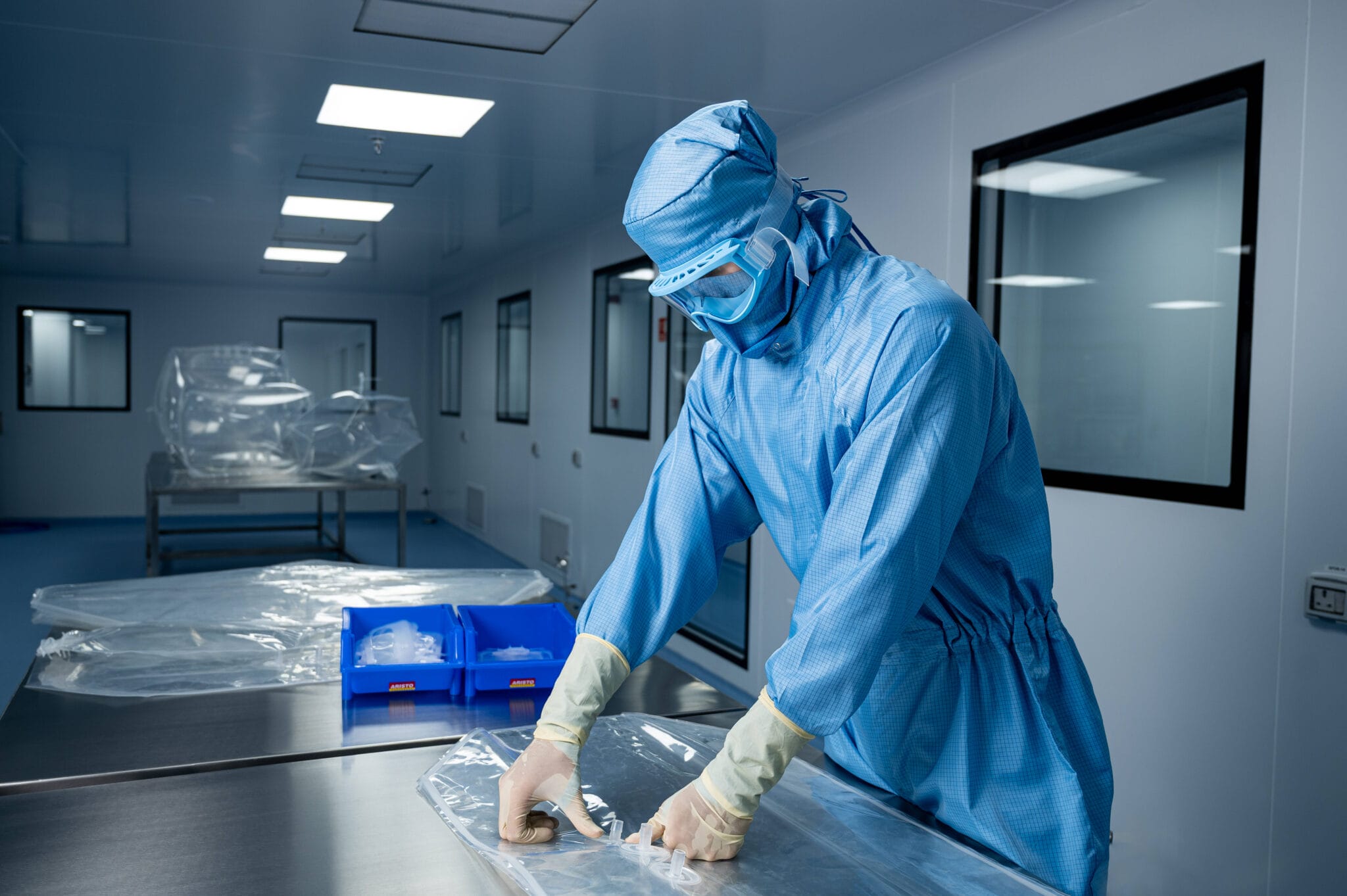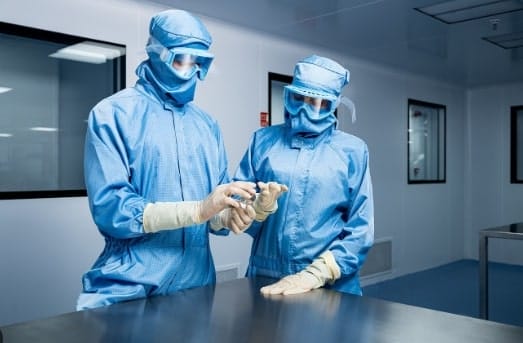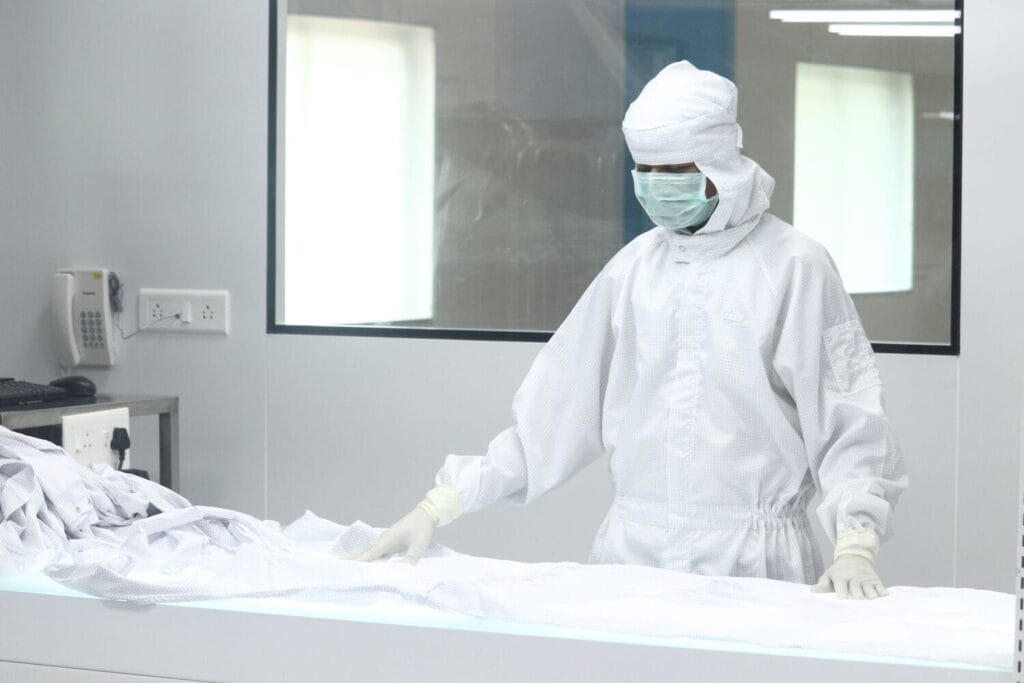
Controlled laundry processes to maintain garment integrity
In the high-stakes environment of pharmaceutical manufacturing, even the smallest oversight can compromise product integrity and patient safety. Among the critical control points, cleanroom garment management stands as a frontline defense against contamination. The process through which these specialised textiles are laundered directly impacts their performance, longevity, and protective capabilities. When cleanroom garments undergo properly validated and controlled laundry processes, they maintain their barrier properties, ensuring contaminants remain isolated from sensitive products. However, when these processes falter, the consequences can be far-reaching—from regulatory non-compliance to compromised product quality and potential patient harm. How can pharmaceutical manufacturers ensure their cleanroom garments provide consistent protection through hundreds of laundry cycles? What makes a laundry process truly “controlled” in the context of cleanroom operations?
Understanding the critical role of garment integrity in pharmaceutical cleanrooms:
In pharmaceutical cleanrooms, garment integrity isn’t merely about appearance—it’s a fundamental component of contamination control strategy. Cleanroom garments function as sophisticated environmental barriers, preventing the release of human-generated particles, microorganisms, and other contaminants into controlled environments. Every time these garments fail to perform as designed, they create opportunities for contamination events that can compromise product safety.
The integrity of cleanroom garments directly influences three critical factors in pharmaceutical manufacturing:
- Particulate retention – The ability to prevent particles generated by personnel from entering the controlled environment
- Microbial barrier efficacy – Protection against microbiological contamination transfer
- Electrostatic discharge control – Management of static electricity that could damage sensitive electronic components or attract particles
What many pharmaceutical manufacturers overlook is how significantly laundry processes affect these protective properties. Each wash cycle represents both an opportunity to restore garment cleanliness and a potential threat to functional integrity. This paradox underscores why controlled laundry processes aren’t merely operational considerations—they’re critical quality attributes that demand validation, monitoring, and continuous improvement.
Cleanroom garments become the frontline barrier for contamination control. It is not very easy for us in the next 10-15 years to imagine that people would disappear completely from operations. People are still an integral part of operations in a pharmaceutical setup. That is where contamination starts to become a problem.
How do cleanroom garments degrade without proper laundering processes?
Cleanroom garments are engineered textile systems, not ordinary clothing. Without properly controlled laundering, these specialised garments deteriorate in ways that compromise their protective functions. Understanding these degradation mechanisms is essential for implementing effective countermeasures.
Physical degradation mechanisms:
Fabric structural damage occurs when improper mechanical action during washing creates excessive abrasion. This manifests as fabric thinning, pilling, and eventually, tears or holes that create direct pathways for contaminants. Similarly, high-temperature drying or inappropriate ironing can weaken synthetic fibres and compromise fabric integrity.
Barrier property diminishment happens gradually and often invisibly. Without proper pH control during washing, the fabric’s filtration efficiency deteriorates, allowing more particles to pass through with each subsequent processing cycle. This reduction in barrier properties can occur while the garment still appears visually acceptable, creating a dangerous false sense of security.
Functional performance losses:
Beyond physical damage, improper laundering triggers functional deterioration mechanisms:
- Increased particle shedding – Harsh detergents and mechanical action can roughen fibres, causing them to release more particles during wear
- Compromised electrostatic properties – Improper rinsing leaves residues that interfere with antistatic treatments
- Reduced comfort and breathability – Chemical residues and improper finishing affect moisture vapour transmission, leading to operator discomfort and increased likelihood of protocol violations
Have you considered how these degradation mechanisms might be affecting your current garment programme? The subtle nature of these changes makes regular testing and validation essential components of quality assurance.
Essential components of validated cleanroom laundry processes:
A truly controlled cleanroom laundry process transcends basic cleaning—it represents a comprehensive system designed to restore garment cleanliness while preserving critical performance attributes. The foundation of this system includes several essential components working in harmony.
Validated wash formulations and cycles:
Wash chemistry optimisation involves selecting detergents and additives specifically formulated for cleanroom textiles. These formulations must effectively remove contaminants while minimising damage to fabric structures and functional finishes. The ideal pH range typically falls between 6 and 8 to prevent degradation of fabric treatments while maintaining cleaning efficacy.
Mechanical action control requires precise adjustment of wash cycle parameters—including duration, agitation intensity, and load factors—to minimise fabric stress while ensuring thorough cleaning. This delicate balance demands validation through both visual inspection and performance testing of garments after predetermined numbers of wash cycles.
Water quality management:
Water serves as both the cleaning medium and potential contamination vector. Controlled laundry processes must include:
- Water filtration systems to remove particulates that could redeposit on garments
- Deionisation or reverse osmosis treatments to eliminate minerals that interfere with detergent effectiveness
- Microbial control measures to prevent biofilm formation in water systems
Contamination control protocols:
Strategic workflow design prevents cross-contamination through physical segregation and unidirectional process flow.
This includes:
- Separate areas for soiled garment receipt, sorting, and processing
- Distinct zones for clean garment handling, inspection, and packaging
- HEPA-filtered air systems in clean processing areas
- Personnel gowning protocols that match the classification of each processing area
The effectiveness of these controls must be verified through environmental monitoring programmes that assess particulate and microbial contamination levels at critical control points throughout the laundry process.
| Process Component | Critical Parameters | Validation Approach |
|---|---|---|
| Wash Chemistry | Detergent concentration, pH, temperature | Chemical titration, pH monitoring, thermal validation |
| Mechanical Action | Cycle duration, agitation intensity, load size | Fabric strength testing, particle shedding analysis |
| Water Quality | Conductivity, total organic carbon, bioburden | Analytical testing, microbial enumeration |
| Drying Conditions | Temperature profile, duration, residual moisture | Thermal mapping, moisture content verification |
Regulatory framework: Meeting EN 14065 and EU GMP Annex 1 requirements
Cleanroom laundry processes operate within a complex regulatory landscape, with EN 14065 and EU GMP Annex 1 setting stringent requirements for pharmaceutical manufacturers in India and globally. Understanding and implementing these standards is essential for compliance and product protection.
EN 14065: Biocontamination control system:
EN 14065 establishes a risk-based approach to textile biocontamination control through the Risk Analysis and Biocontamination Control (RABC) system.
This framework requires:
- Identification of microbiological hazards at each process step
- Implementation of control measures proportionate to identified risks
- Establishment of validation and monitoring procedures
- Documentation of corrective actions when control limits are exceeded
For pharmaceutical manufacturers, EN 14065 compliance requires partnering with laundry providers who maintain validated RABC systems with documented risk assessments, control measures, and verification activities.
EU GMP Annex 1: Cleanroom garment requirements:
The revised EU GMP Annex 1 introduces more stringent requirements for cleanroom garments and their processing, including:
- Integration of garment management within the facility’s overall Contamination Control Strategy
- Qualification of laundry processes with verification of cleaning efficacy and garment integrity
- Defined garment lifecycle management with documented maximum reprocessing limits
- Enhanced monitoring requirements for both the laundry environment and processed garments
How thoroughly has your organisation evaluated its cleanroom laundry processes against these updated requirements? With regulatory authorities increasingly scrutinising contamination control measures, proactive compliance has become a competitive advantage.
Technology innovations enhancing garment lifecycle management:
The evolution of cleanroom laundry extends beyond traditional washing methods to encompass sophisticated technologies that enhance traceability, performance validation, and lifecycle management. These innovations provide unprecedented control over garment quality and processing consistency.
RFID-enabled garment tracking:
Radio-frequency identification (RFID) technology transforms garment management by enabling individual garment tracking throughout its lifecycle.
Each garment receives a unique identifier that records:
- Total processing cycles completed
- Specific process parameters for each laundering cycle
- Repair history and integrity test results
- Usage patterns by cleanroom classification
This data-driven approach ensures garments remain within validated lifecycle limits and creates an auditable trail that simplifies regulatory compliance. It also enables proactive retirement of garments approaching their validated lifecycle limit before performance deteriorates.
Automated inspection systems:
Advanced optical inspection technologies supplement human visual checks with consistent, objective assessment of garment integrity.
These systems can detect:
- Microscopic holes or tears invisible to the naked eye
- Inconsistent fabric thickness indicating material degradation
- Residual contamination after processing
By identifying compromised garments before they re-enter cleanroom environments, these systems provide an additional layer of contamination control while generating data that can inform process improvements.
Data-driven process optimization:
The integration of process monitoring sensors with cloud-based analytics platforms enables continuous optimisation of laundry processes. Real-time monitoring of critical parameters—including water quality, detergent concentration, temperature profiles, and mechanical action—allows immediate intervention when processes deviate from validated parameters.
These technological advances represent a paradigm shift from periodic validation to continuous verification, enhancing both process control and documentation for regulatory compliance.
Implementing effective cleanroom garment management: Lindström’s approach
Effective cleanroom garment management requires systematic processes that balance contamination control with operational efficiency. A comprehensive approach encompasses the entire garment lifecycle from initial selection through ongoing maintenance and eventual retirement.
Validated cleanroom laundry protocols:
The foundation of effective garment management lies in validated laundering protocols specifically designed for cleanroom textiles.
These protocols include:
- Qualification of wash formulations through challenge testing with relevant contaminants
- Validation of mechanical parameters to balance cleaning efficacy with fabric preservation
- Verification of rinse effectiveness to eliminate detergent residues
- Controlled drying processes that prevent thermal damage while ensuring complete moisture removal
Comprehensive quality assurance:
Quality assurance extends beyond basic visual inspection to encompass systematic verification of garment performance attributes:
- Particle shedding testing at defined intervals throughout the garment lifecycle
- Barrier efficiency verification using standardised test methods
- Regular microbial testing of processed garments
- Documented inspection protocols with defined acceptance criteria
These measures ensure that cleanroom garments maintain their protective functions throughout their service life, preventing the use of compromised garments that might appear visually acceptable while failing to provide adequate contamination control.
Personnel training and competency verification:
Even the most sophisticated laundry processes require skilled personnel to implement them consistently. Comprehensive training programs ensure that staff understand:
- The critical nature of cleanroom garment processing
- The scientific principles behind each process step
- The potential consequences of procedural deviations
- Proper documentation requirements for regulatory compliance
Regular competency assessments verify that this knowledge translates into consistent practice, creating a culture of quality that reinforces technical controls.
Key learnings: Ensuring cleanroom garment integrity through controlled processes
The maintenance of cleanroom garment integrity through controlled laundry processes represents a critical but often underappreciated aspect of contamination control in pharmaceutical manufacturing. As we’ve explored throughout this discussion, several key principles emerge as essential for effective implementation:
Integrated quality by design:
Successful cleanroom laundry processes incorporate quality by design principles—identifying critical quality attributes, defining acceptable performance ranges, and implementing control strategies that maintain these parameters within validated limits. This approach replaces reactive quality control with proactive quality assurance, significantly reducing the risk of compromised garment performance.
Continuous verification over periodic validation:
While initial process validation establishes a foundation for controlled operations, continuous verification through real-time monitoring and regular performance testing provides ongoing assurance of process effectiveness. This shift aligns with regulatory trends emphasizing continued process verification rather than point-in-time validation events.
Data-driven lifecycle management:
Comprehensive tracking of individual garment history—from processing cycles to performance test results—enables evidence-based decisions about garment retirement. This approach prevents the use of garments that have exceeded their validated service life while maximizing the utility of those still performing within specifications.
The controlled laundering of cleanroom garments represents more than a service function—it’s a critical component of contamination control that directly impacts product quality and patient safety. By implementing validated processes, leveraging technological innovations, and maintaining rigorous quality standards, pharmaceutical manufacturers can ensure their cleanroom garments provide consistent protection throughout their service life.
As regulatory requirements continue to evolve and contamination control strategies become increasingly sophisticated, the importance of controlled laundry processes will only grow. Forward-thinking manufacturers recognize this reality and are establishing partnerships with specialized providers who offer the expertise, infrastructure, and quality systems needed to maintain garment integrity in today’s demanding pharmaceutical manufacturing environment.





